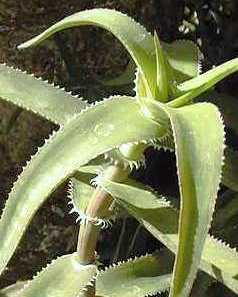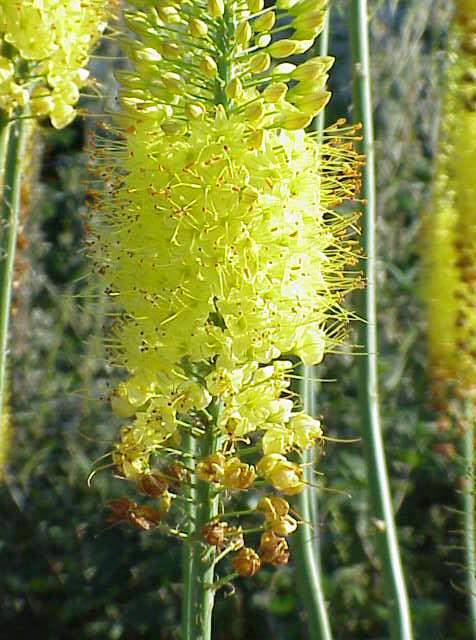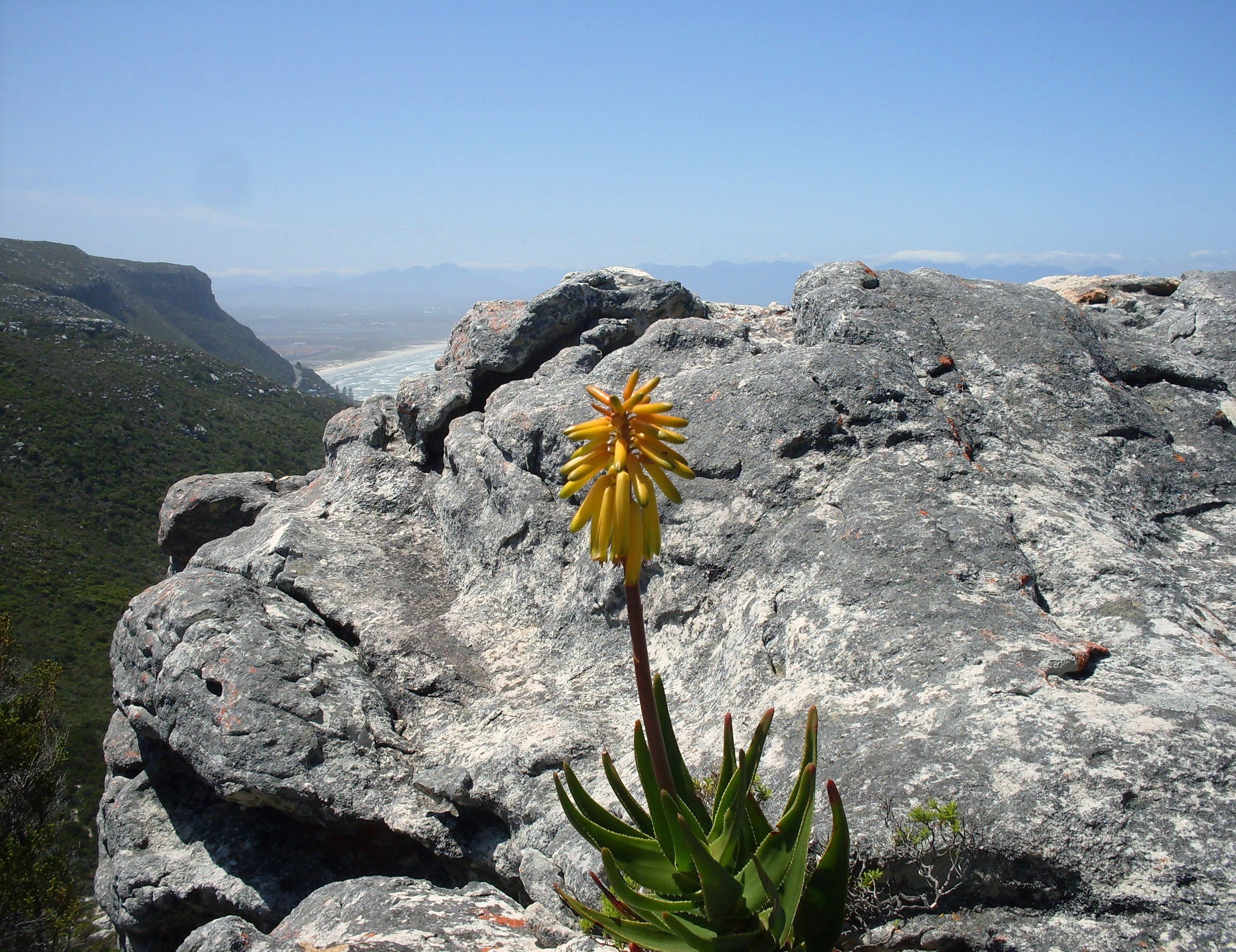|
Aloiampelos Ciliaris
''Aloiampelos ciliaris'', formerly ''Aloe ciliaris'', the common climbing-aloe, is a thin, tough, rapidly growing succulent plant from South Africa. Appearance They can be differentiated from other ''Aloiampelos'' species by the way that the soft, white, hair-like teeth (''=ciliaris'') that grow along the margins of the leaves, extend all the way around the stem, at the base of the leaf. The fleshy leaves themselves are strongly recurved (helping to anchor the tall stems in dense thickets and assist the plant in climbing). The leaf sheaths are conspicuously striped green and white. These plants grow very quickly, producing long, thin, untidy stems that shoot upwards, producing large bright orange-red flowers once they reach the sun. If there are no nearby trees to act as host and support, it just forms a straggly shrub. The red flowers appear mostly from November to April. Distribution ''Aloiampelos ciliaris'' is naturally widespread in the coastal and thicket vegetation of ... [...More Info...] [...Related Items...] OR: [Wikipedia] [Google] [Baidu] |
Succulent Plant
In botany, succulent plants, also known as succulents, are plants with parts that are thickened, fleshy, and engorged, usually to retain water in arid climates or soil conditions. The word ''succulent'' comes from the Latin word ''sucus'', meaning "juice" or "sap". Succulent plants may store water in various structures, such as leaf, leaves and Plant stem, stems. The water content of some succulent organs can get up to 90–95%, such as ''Glottiphyllum semicyllindricum'' and ''Mesembryanthemum barkleyii''. Some definitions also include roots, thus geophytes that survive unfavorable periods by dying back to underground storage organs may be regarded as succulents. The habitats of these water-preserving plants are often in areas with high temperatures and low rainfall, such as deserts, but succulents may be found even in Alpine climate, alpine ecosystems growing in rocky soil. Succulents are characterized by their ability to thrive on limited water sources, such as mist and dew, ... [...More Info...] [...Related Items...] OR: [Wikipedia] [Google] [Baidu] |
Aloiampelos Gracilis
''Aloiampelos gracilis'', formerly ''Aloe gracilis'', the rocket aloe, is a succulent plant, endemic to dry thicket vegetation around the city of Port Elizabeth, South Africa. Its natural range lies just to the west of the related '' Aloiampelos ciliaris'', and it occurs in bushy fynbos and dry thickets, and clustered on rocky outcrops at all altitudes. Its range extends westwards into the Baviaanskloof mountains. Description Its thin stems grow tall and erect from its base on the ground, often reaching 2 m in length, and branching near the base. When it is not climbing on other vegetation or fences, the mass of semi-erect stems forms a shrubby bush. Its narrow, succulent leaves are dull-green with tiny, soft, white teeth along the margins, and it normally flowers from May, through to August. It can easily be distinguished from other species in the genus by its long (45 mm), thin, bright red flowers which appear on multi-branched racemes. Distribution ''Aloiampel ... [...More Info...] [...Related Items...] OR: [Wikipedia] [Google] [Baidu] |
Endemic Flora Of South Africa
Endemism is the state of a species being found in a single defined geographic location, such as an island, state, nation, country or other defined zone; organisms that are indigenous to a place are not endemic to it if they are also found elsewhere. For example, the Cape sugarbird is found exclusively in southwestern South Africa and is therefore said to be ''endemic'' to that particular part of the world. An endemic species can be also be referred to as an ''endemism'' or in scientific literature as an ''endemite''. For example '' Cytisus aeolicus'' is an endemite of the Italian flora. '' Adzharia renschi'' was once believed to be an endemite of the Caucasus, but it was later discovered to be a non-indigenous species from South America belonging to a different genus. The extreme opposite of an endemic species is one with a cosmopolitan distribution, having a global or widespread range. A rare alternative term for a species that is endemic is "precinctive", which applies to ... [...More Info...] [...Related Items...] OR: [Wikipedia] [Google] [Baidu] |
Flora Of The Cape Provinces
Flora is all the plant life present in a particular region or time, generally the naturally occurring (indigenous) native plants. Sometimes bacteria and fungi are also referred to as flora, as in the terms '' gut flora'' or '' skin flora''. Etymology The word "flora" comes from the Latin name of Flora, the goddess of plants, flowers, and fertility in Roman mythology. The technical term "flora" is then derived from a metonymy of this goddess at the end of the sixteenth century. It was first used in poetry to denote the natural vegetation of an area, but soon also assumed the meaning of a work cataloguing such vegetation. Moreover, "Flora" was used to refer to the flowers of an artificial garden in the seventeenth century. The distinction between vegetation (the general appearance of a community) and flora (the taxonomic composition of a community) was first made by Jules Thurmann (1849). Prior to this, the two terms were used indiscriminately.Thurmann, J. (1849). ''Essai de ... [...More Info...] [...Related Items...] OR: [Wikipedia] [Google] [Baidu] |
Asphodeloideae
Asphodeloideae is a subfamily of the monocot family Asphodelaceae in the order Asparagales. It has previously been treated as a separate family, Asphodelaceae ''sensu stricto''. The family Asphodelaceae has now been proposed to be a nomen conservandum, and the proposal has been recommended for ratification in 2017. In that case, Asphodelaceae will have priority over Xanthorrhoeaceae. This is reflected in the APG IV family lists. The subfamily name is derived from the generic name of the type genus, ''Asphodelus''. Members of group are native to Africa, central and western Europe, the Mediterranean basin, Central Asia and Australia, with one genus ('' Bulbinella'') having some of its species in New Zealand. The greatest diversity occurs in South Africa. The genera ''Aloe'', ''Asphodelus'', and ''Kniphofia'' are perhaps best known from their use in horticulture as ornamental plants. Description The Asphodeloideae are distinguished by a general presence of anthraquinones, s ... [...More Info...] [...Related Items...] OR: [Wikipedia] [Google] [Baidu] |
Royal Botanic Gardens, Kew
Royal Botanic Gardens, Kew is a non-departmental public body in the United Kingdom sponsored by the Department for Environment, Food and Rural Affairs. An internationally important botanical research and education institution, it employs 1,100 staff. Its board of trustees is chaired by Dame Amelia Fawcett. The organisation manages botanic gardens at Kew in Richmond upon Thames in south-west London, and at Wakehurst, a National Trust property in Sussex which is home to the internationally important Millennium Seed Bank, whose scientists work with partner organisations in more than 95 countries. Kew, jointly with the Forestry Commission, founded Bedgebury National Pinetum in Kent in 1923, specialising in growing conifers. In 1994, the Castle Howard Arboretum Trust, which runs the Yorkshire Arboretum, was formed as a partnership between Kew and the Castle Howard Estate. In 2019, the organisation had 2,316,699 public visitors at Kew, and 312,813 at Wakehurst. Its site at Kew ... [...More Info...] [...Related Items...] OR: [Wikipedia] [Google] [Baidu] |
World Checklist Of Selected Plant Families
The World Checklist of Selected Plant Families (usually abbreviated to WCSP) is an "international collaborative programme that provides the latest peer reviewed and published opinions on the accepted scientific names and synonyms of selected plant families." Maintained by the Royal Botanic Gardens, Kew, it is available online, allowing searches for the names of families, genera and species, as well as the ability to create checklists. The project traces its history to work done in the 1990s by Kew researcher Rafaël Govaerts on a checklist of the genus ''Quercus''. Influenced by the Global Strategy for Plant Conservation, the project expanded. , 173 families of seed plants were included. Coverage of monocotyledon families is complete; other families are being added. There is a complementary project called the International Plant Names Index (IPNI), in which Kew is also involved. The IPNI aims to provide details of publication and does not aim to determine which are accepted spec ... [...More Info...] [...Related Items...] OR: [Wikipedia] [Google] [Baidu] |
Aloiampelos Striatula
''Aloiampelos striatula'', formerly ''Aloe striatula'', the hardy aloe or striped-stemmed aloe, is a sturdy succulent plant that naturally occurs on the summits of mountains along the south of the Karoo region of South Africa. Tough and hardy, with bright yellow flowers, it is also cultivated as a garden ornamental. Description ''Aloiampelos striatula'' is a robust rambling plant that can form a large shrub up to 2 m in height. It is closely related to Cape Town's ''Aloiampelos commixta'', but it is easily distinguished from it by the distinctive dark green stripes on the stems and leaf sheaths (its species name, ''striatula'', means "little stripes"), and by its thin, recurved leaves (which, like its flowers, are more densely packed). The leaves of ''Aloiampelos striatula'' are dark green and strongly recurved, with numerous small white teeth along their margins. The flowers are reddish-orange and appear densely on tall (40cm), un-branched, cone-shaped racemes throughout th ... [...More Info...] [...Related Items...] OR: [Wikipedia] [Google] [Baidu] |
Aloiampelos Juddii
''Aloiampelos juddii'', formerly ''Aloe juddii'', the Koudeberg aloe, is a newly discovered species that is native to a few rocky outcrops and a farm ("Farm 215"), near to Cape Agulhas in the Western Cape, South Africa. Description It is one of the few members of the tribe Aloeae that are indigenous to the fynbos vegetation type and it is closely related to the similarly rare ''Aloiampelos commixta'' of Table Mountain. Like this species, it is a slender, multi-stemmed succulent plant, with semi-erect stems that often sprawl along the ground and over rocks. In October and November it produces brilliant displays of bright red flowers, that are usually swiftly eaten by the tiny "Klipspringer" antelope that live in the area. It was named after the artist Eric Judd, who discovered it in 2004, and is known in Afrikaans as the ''"Baardskeerdersbosvuurpylaalwyn"''. Distribution and habitat ''Aloiampelos juddii'' has a small and restricted distribution. It occurs on rocky, south ... [...More Info...] [...Related Items...] OR: [Wikipedia] [Google] [Baidu] |
Aloiampelos Commixta
''Aloiampelos commixta'' is a flowering plant in the Asphodelaceae family. It is commonly called Table Mountain aloe, and is a rare succulent plant that is endemic to the Cape Peninsula, South Africa. It naturally occurs only on the Table Mountain range, within the city of Cape Town. Description ''Aloiampelos commixta'' is a rambling, multi-stemmed plant, also known as the Peninsula rambling aloe. This "accent plant" rarely gets over tall, as its slender stems tend to sprawl along the ground and over rocks. ''Aloiampelos commixta'' flowers in late winter (August and September). A stout inflorescence shoots up, bearing reddish erect buds that open into dense, bright orange-yellow flowers. In its natural habitat in the fynbos vegetation of Table Mountain, its flowers are pollinated by sunbirds and honey bees. The leaves are thick, fleshy and evenly-spaced on a fine stem, with distinctive green stripes on the internodes. The leaves tend to be about 200 mm long, with tiny w ... [...More Info...] [...Related Items...] OR: [Wikipedia] [Google] [Baidu] |
Aloiampelos Tenuior
''Aloiampelos tenuior'', formerly ''Aloe tenuior'', the fence aloe, is a bushy, multi-branched succulent plant from the grasslands and thickets of the Eastern Cape, Kwazulu Natal and Mpumalanga, South Africa. Its preferred habitat is sandy soils in open country, unlike many of its relatives that favour thicket vegetation. It is one of the most profusely flowering of all aloes and their relatives. Description Locally, this plant is known as ''iKhalene'' in Xhosa, ''inTelezi'' in Fengu, and simply the fence aloe in English. The specific epithet ''tenuior'' means "very slender", and refers to the plant's stems. A medium-sized, bushy plant that forms clumps up to 3 m tall, with leaves tufted at the ends of branches. The leaves have a distinctive greyish-green colour and the leaf margins have tiny white teeth. These leaves are a traditional remedy for tapeworm. An unusually large, woody rootstock usually forms on the ground at the base of the plant. Like all species in the gen ... [...More Info...] [...Related Items...] OR: [Wikipedia] [Google] [Baidu] |
South Africa
South Africa, officially the Republic of South Africa (RSA), is the southernmost country in Africa. It is bounded to the south by of coastline that stretch along the South Atlantic and Indian Oceans; to the north by the neighbouring countries of Namibia, Botswana, and Zimbabwe; and to the east and northeast by Mozambique and Eswatini. It also completely enclaves the country Lesotho. It is the southernmost country on the mainland of the Old World, and the second-most populous country located entirely south of the equator, after Tanzania. South Africa is a biodiversity hotspot, with unique biomes, plant and animal life. With over 60 million people, the country is the world's 24th-most populous nation and covers an area of . South Africa has three capital cities, with the executive, judicial and legislative branches of government based in Pretoria, Bloemfontein, and Cape Town respectively. The largest city is Johannesburg. About 80% of the population are Black South Afri ... [...More Info...] [...Related Items...] OR: [Wikipedia] [Google] [Baidu] |

.jpg)



